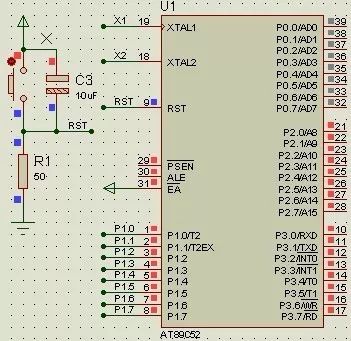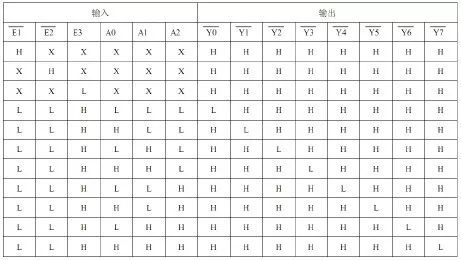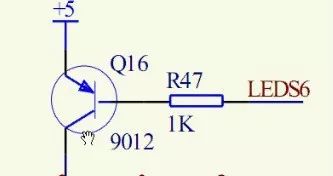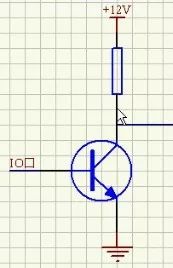
As you can see, when R1 is 10k in the reset circuit, the RST pin is high. However, when R1 is 50, RST goes low. It’s clear that using a 10k resistor is incorrect because it causes the microcontroller to remain in a reset state, making it unable to function properly. This happens because the RST pin contains a transistor that allows a small leakage current even when it's off. When the resistance is too high, this tiny current can still pull the pin to a high level, which is not desired.
Second, calculating the LED series resistor
For a typical red LED, the forward voltage ranges from 1.6V to 2.4V, and the operating current is between 2mA and 20mA. The brightness increases significantly between 2mA and 5mA, and beyond 5mA, there's little change in brightness. Therefore, choosing an appropriate current is important for both efficiency and longevity.

Third, port limitation
When the number of available I/O pins is insufficient, you can use an expansion chip like the 74HC138 decoder to expand the functionality. This allows you to control more devices with fewer pins, making your design more efficient and scalable.


Fourth, filter capacitors
Filter capacitors are divided into high-frequency and low-frequency types. High-frequency capacitors, typically 104 (0.1µF), are used to short out high-frequency noise and protect ICs from interference such as static electricity. They are usually placed between power and ground. Low-frequency capacitors, like electrolytic capacitors (100µF), help smooth out ripple and stabilize the power supply. They are often placed near power interfaces or high-power components like motors or displays.
The role of the fifth transistor
Transistors have multiple functions. One is as a switch: when the base is high, the transistor turns off; when it's low, it turns on. To calculate the current-limiting resistor, you can use the formula R = (5 - 0.7) / (I / 100), where I is the collector current and 0.7V is the base-emitter voltage.

Another function is amplification, where the collector current is about 100 times the base current. Transistors can also be used for level conversion, where a high input signal turns the transistor on, pulling the output low, and a low input turns it off, allowing the output to go high.

Sixth, digital tube issues

Digital tubes display numbers using segments labeled a through g, plus a decimal point (dp). Each segment lights up based on a specific combination, and the truth table shows which segments are active for each digit. Understanding this helps in programming the correct signals to drive the display.
Seventh, current and voltage drive problems
Microcontrollers have limited output capability. When driving multiple loads, a driver chip like the 74HC245 is necessary to provide sufficient current and prevent damage to the microcontroller.
Eighth, pull-up resistor
Pull-up resistors ensure that a signal line is at a known high level when no other device is driving it. The value should be chosen carefully—too large, and it may not provide enough current; too small, and it may consume excessive power. Common values range from 1kΩ to 10kΩ.
Pull-down resistors serve a similar purpose but keep the line low when not being driven. They are essential for preventing floating inputs and ensuring stable operation in circuits with open-collector gates.
Ninth, crystal and reset circuit
Crystal oscillators provide a stable clock source for microcontrollers. Choosing the right frequency (e.g., 6MHz, 12MHz, 11.0592MHz, etc.) and load capacitance (usually 20pF) is crucial. A multimeter can be used to measure the voltage across the crystal to verify its operation.
The reset circuit initializes the microcontroller by resetting all internal registers. For the 51 MCU, the reset time is about two machine cycles. Proper calculation of resistor and capacitor values ensures reliable resets, and these values can often be found through online resources or datasheets.
Tenth, button debounce
Mechanical buttons can cause electrical noise due to their physical movement. This results in multiple transitions when pressed or released. Two common methods to eliminate this are hardware and software debouncing. Hardware debouncing uses a capacitor to filter out the high-frequency noise, while software debouncing involves delaying the reading after detecting a key press to ensure stability.
By implementing either method, you can ensure accurate and consistent button detection in your designs.
All in one pc 23.8 inch, all in one pc i5 8gb ram, all in one desktop intel core i5, pc all in one 24 inch
Guangdong Elieken Electronic Technology Co.,Ltd. , https://www.elieken.com